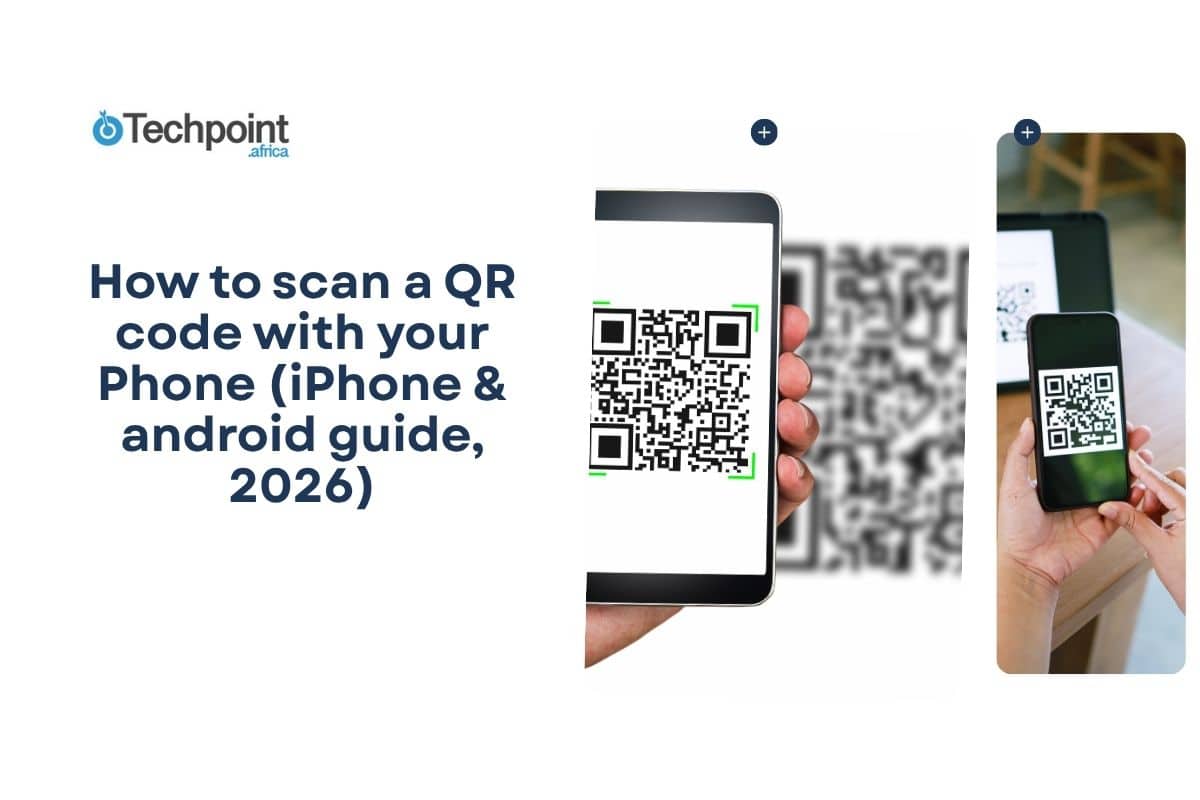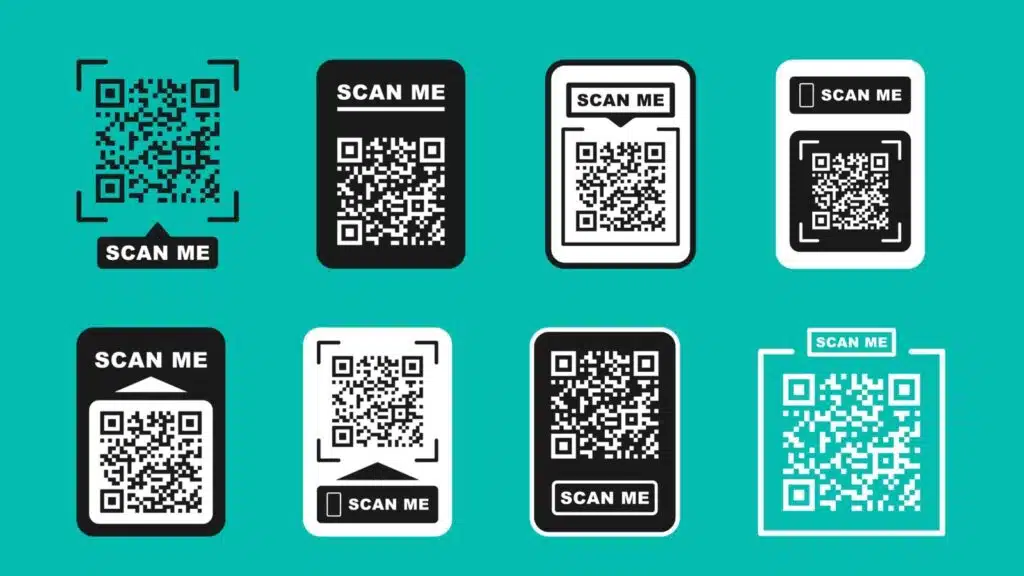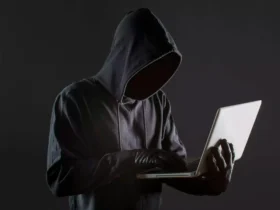Master QR Code Scanning in 2026: The Ultimate iPhone & Android Guide!

While I was always aware of QR codes, they once seemed like tools reserved for tech enthusiasts. Typically, I encountered them during app registrations, Wi-Fi connections, or WhatsApp verifications-useful, yet not integral to everyday routines.
That perception shifted when a server handed me a laminated card featuring a black-and-white square instead of a traditional menu. This moment marked my firsthand experience with QR codes as a daily convenience rather than a niche technology.
Nowadays, QR codes-short for Quick Response codes-serve as digital gateways bridging the physical and online worlds. They appear on restaurant tables, product labels, event passes, posters, and even on routers to simplify Wi-Fi sharing. Each code contains encoded data such as URLs, contact details, or payment links, which smartphones can instantly interpret.
Modern devices no longer require specialized apps or technical expertise to scan these codes. Whether you own an iPhone or an Android phone, your camera app is equipped to recognize and process QR codes within seconds.
Summary: Essential Points
- Use your phone’s native Camera app (iPhone) or Google Lens/Camera (Android) to scan QR codes swiftly.
- Always verify the origin and preview the URL before interacting. Avoid scanning codes from unknown or unsolicited sources.
- If scanning fails, try cleaning your camera lens, enabling QR scanning in settings, using Google Lens or Control Centre, or scanning from a saved image.
Understanding QR Codes and Their Ubiquity

QR codes are two-dimensional barcodes capable of storing diverse information such as website links, Wi-Fi credentials, payment instructions, app downloads, or event tickets. Think of them as compact digital messengers that, when scanned, instantly direct you to the intended content.
They have become omnipresent-from menus at eateries and wristbands at concerts to packaging labels, business cards, and community bulletins-acting as seamless connectors between tangible items and digital experiences.
Their widespread adoption surged post-2020, driven by the demand for contactless interactions. Scanning QR codes emerged as a hygienic, efficient alternative to touching shared surfaces or devices.
Step-by-Step: Scanning a QR Code on Your Smartphone
Here’s a straightforward guide to scanning QR codes on various devices:
For iPhone Users (iOS 11 and above)
iPhones offer multiple ways to scan QR codes: via the Camera app, Control Centre’s Code Scanner, or Siri voice commands.
1. Using the Camera App
- Launch the Camera app. Swipe left from the lock screen or tap the Camera icon on your home screen.
- Focus on the QR code. Hold your phone steady, ensuring the entire code fits within the frame. No need to press the shutter button.
- Wait briefly. A yellow highlight will appear around the code once detected.
- Tap the notification banner. This banner, appearing at the top, displays the action or link associated with the code.
- Access the content. Tapping the banner opens the linked website, Wi-Fi connection prompt, or contact addition.
2. Using Control Centre’s Code Scanner
This tool offers a quick alternative if the Camera app is slow or unresponsive.
- Open Control Centre: Swipe down from the top-right corner on iPhone X and newer, or swipe up from the bottom on older models.
- Tap the Code Scanner icon. It resembles a small QR code inside a square.
- Point your phone at the QR code. A frame and link preview will appear instantly.
- Follow the prompt. The scanner functions similarly to the Camera app but in a dedicated full-screen mode.
Note: If Code Scanner isn’t visible, add it via Settings > Control Centre > Customize Controls.
3. Using Siri
Simply say, “Hey Siri, scan a QR code,” and Siri will launch the Code Scanner. Point your camera at the code, and Siri will handle the rest. This works even when using AirPods or CarPlay.
Note: Ensure your iPhone runs iOS 14 or later and that Code Scanner is enabled in Control Centre.
For Android Devices
Steps may vary slightly depending on the manufacturer (Samsung, Google Pixel, Xiaomi, etc.), but the general process remains consistent.
Samsung Galaxy (Android 9+)
A. Camera App:
- Open the Camera app and enable “Scan QR codes” in settings.
- Point at the QR code and wait for a pop-up notification.
- Tap the notification to open the link or perform the action.
B. Quick Settings:
- Swipe down to access Quick Settings.
- Tap “Scan QR code” to launch the scanner.
C. Gallery App:
- Open the Gallery and select the QR code image.
- Tap the Bixby Vision icon to scan.
D. Samsung Internet Browser:
- Enable the QR scanner via Settings > Layout and menu > Customize menu.
- Access the scanner from the browser menu.
Google Pixel (Android 8+)
A. Camera App:
- Open the Camera app and tap the Google Lens icon.
- Point at the QR code to see a link preview.
B. Quick Settings:
- Swipe down to open Quick Settings.
- Add and tap “Scan QR code” if not already present.
- Scan the code as usual.
Other Android Brands (Xiaomi, Infinix, Tecno, Oppo, etc.)
If your camera lacks built-in QR scanning:
- Open the Google or Google Lens app.
- Tap the camera icon and point at the QR code.
- Tap the detected link or action.
Some devices also offer QR scanning through AI Camera modes or Smart Panels.
Using Google Chrome or Google Assistant
From Chrome:
- Tap the address bar.
- Select the QR code icon on the right.
- Align the QR code within the frame to open the link.
From Google Assistant:
- Say, “Hey Google, scan a QR code.”
- Google Lens will open, ready to scan.
Scanning QR Codes from Images or Screenshots
If you receive a QR code via messaging or email, you can scan it directly from your photo gallery.
On iPhone
- Open the Photos app and select the image with the QR code.
- Press and hold the QR code within the image.
- Tap the link preview or banner that appears.
If this doesn’t work, tap the info icon and select the detected link under “Look Up.”
On Android
- Open Google Photos and select the QR code image.
- Tap the Google Lens icon at the bottom.
- Wait for detection and tap the resulting link.
If using the Gallery app, share the image to Google Lens to scan.
When to Use a Dedicated QR Code Scanner App
If your device doesn’t support native QR scanning or you have an older model, third-party QR scanner apps are a reliable alternative. These apps often include features like scan history, batch scanning, and QR code creation.
Choose reputable apps that request only camera access and avoid those with excessive permissions or intrusive ads.
Safety Guidelines for QR Code Usage
Not all QR codes are trustworthy. Some may lead to phishing sites or malware. Follow these precautions:
1. Verify the Source
Codes on official materials like menus, product packaging, or event tickets are generally safe. Be cautious with codes on random flyers, stickers, or public surfaces.
2. Preview URLs Before Clicking
Both iPhone and Android display a preview banner. Inspect the URL for misspellings or suspicious characters before proceeding.
3. Beware of Fake Overlays
Scammers sometimes place counterfeit QR stickers over legitimate ones. Avoid scanning if the code appears tampered with.
4. Avoid Scanning Unsolicited Codes
Treat QR codes like links-don’t scan codes received unexpectedly via email or messages.
5. Use Trusted Apps
If using third-party scanners, select those with built-in security features that warn against risky URLs.
Troubleshooting Common QR Scanning Issues
| Issue | Solution |
| Camera fails to detect code | Enable QR scanning in settings, clean the lens, improve lighting, and adjust distance. |
| No notification on iPhone | Activate “Scan QR Codes” in Settings > Camera. |
| Blurry QR code | Take a screenshot and scan it from your photo gallery using Google Lens or Photos. |
| App crashes | Update the app or use the built-in camera scanner. |
| “No data found” error | Try a different scanner app; the code may use an uncommon format. |
Final Thoughts
QR codes have seamlessly integrated into our daily routines, from making payments to linking apps. Mastering how to scan them with your phone is a simple yet valuable skill that enhances convenience.
Once familiar, scanning a QR code is as easy as opening your camera, aiming, and tapping the prompt-quick and effortless.
Frequently Asked Questions
What occurs when I scan a QR code?
Your phone deciphers the embedded data-often a URL, contact info, or text-and displays a prompt. You can preview the destination before opening it. For websites, your browser launches; for Wi-Fi or contacts, your device offers to connect or save automatically.
Are QR codes safe to use?
Generally, yes. However, safety depends on the source. Malicious QR codes can redirect to fraudulent sites or phishing pages, so always exercise caution.
Is internet access necessary to scan a QR code?
Scanning itself doesn’t require internet, as your camera decodes the code offline. But accessing linked content like websites or apps does need an internet connection. Offline data such as Wi-Fi credentials or contact details can be used without connectivity.
Why won’t my camera scan a QR code?
Common causes include poor lighting, dirty lenses, damaged or blurry codes, or disabled QR scanning in settings. Maintain proper distance (6-12 inches), keep the phone steady, and enable scanning features. If issues persist, try a dedicated QR scanner app.
Do QR codes expire?
Some do. Static QR codes embed permanent data and typically don’t expire. Dynamic QR codes can be deactivated or altered by their creators, often used in time-sensitive campaigns or events.
Disclaimer:
This article reflects our independent analysis and opinions, which may differ from others. We do not guarantee the completeness or accuracy of the information and disclaim liability for any errors or omissions.
The content is not investment advice and should not be treated as such. Products and services may change after publication. Readers should conduct their own research and consult professionals as needed.







Leave a Reply